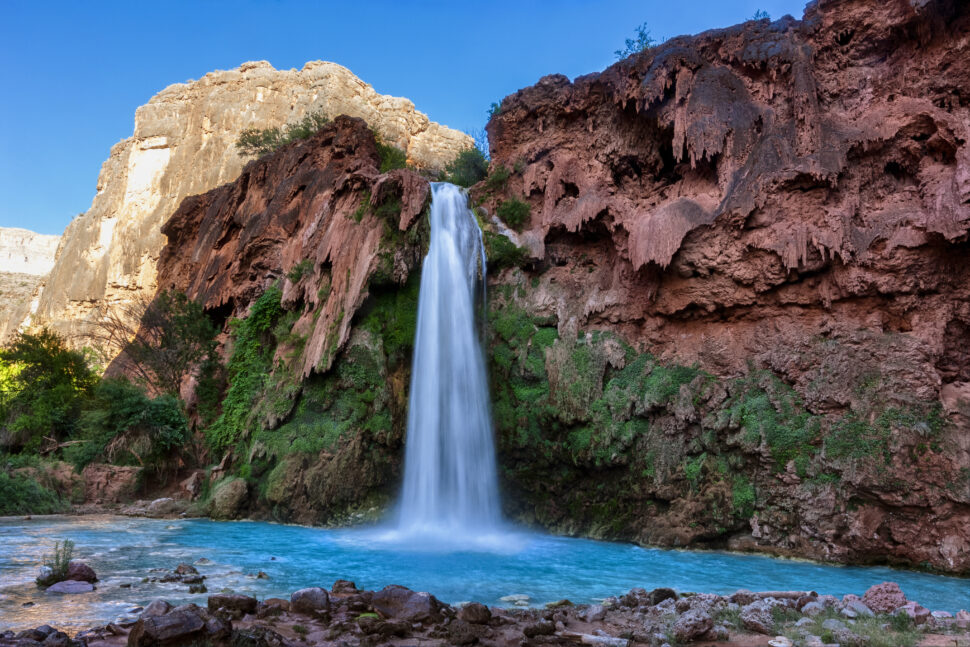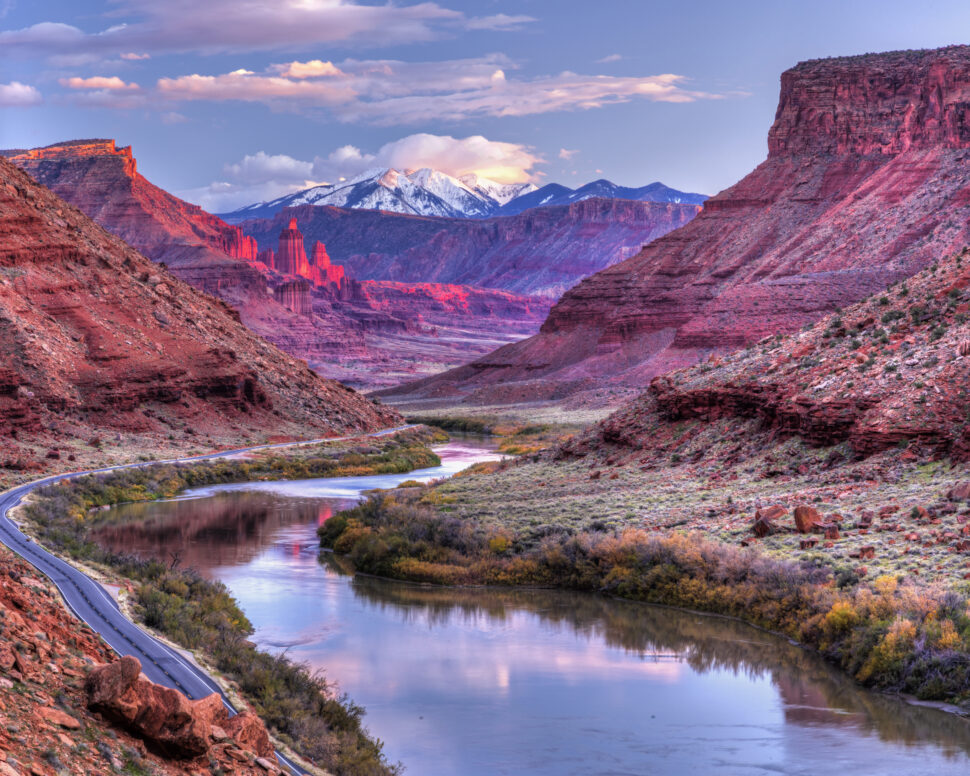The Grand Canyon is one of the most visited national parks in the U.S., attracting over four million visitors to northern Arizona annually. It supports a significant tourism economy, including Indigenous-led tours and businesses. The area is recognized as a UNESCO World Heritage Site, celebrated for its breathtaking landscapes and geological significance. Not only is the Grand Canyon a breathtaking natural wonder, but it’s also a living landscape of culture, history and biodiversity, which is why events like flooding carry more weight than just physical damage.
If you’re planning a trip to the national park or surrounding area in summer 2025, here’s everything to know about recent flash floods impacting the Havasupai Tribe (and hikers), as well as details on why the Grand Canyon won’t be flooded this year. There’s been an uptick in rescues out of this tourist hotspot lately, so be sure to keep safety precautions at the forefront of your mind when booking outdoor excursions.
What We Know About The Havasupai Flash Floods
The Havasupai are an Indigenous tribe whose name means “People of the Blue-Green Water,” a reference to the turquoise waterfalls in their homeland. They have lived in the Grand Canyon for centuries, primarily in a remote area known as Havasu Canyon. Today, the Havasupai continue to steward their land, balancing cultural preservation with tourism to the famous Havasu Falls.
Earlier this month, on June 3, a storm brought two to four inches of rain into the park. The Havasupai Tribe quickly issued flash flood warnings as rising waters surged through the canyon. Although some hikers remained temporarily stranded in the park, none were reported as being injured, according to Williams News. Among those affected was backpacker Diana Baker, who had been camping along Havasu Creek. In a Facebook post, she described the aftermath: “Our gear had completely vanished,” she wrote. “In its place was a scene of devastation: trash, tents and sleeping bags tangled in the trees like forgotten remnants of a storm.”
Day-use access across much of the park remains open, but several inner‑canyon trails are closed both due to flood damage and the ongoing waterline reconstruction. Cleanup is ongoing, and flash-flood risks are still high in the coming monsoon season. Before visiting, double-check current trail and flood conditions.
Why There’s No Planned Flooding In The Grand Canyon This Year

Due to construction efforts taking place on the Glen Canyon Dam, as well as along the Colorado River, federal officials have chosen to hold off on releasing floodwaters this year. The Bureau of Reclamation provided a statement to Newsweek. “After careful consideration of resources and downstream activities, a spring high-flow experiment (HFE) at Glen Canyon Dam will not be implemented,” they wrote.
This development has sparked significant backlash, particularly among local communities. Larry Stevens, an ecologist who represents the Grand Canyon Wildlands Council and Wild Arizona, told Newsweek the decision has left him, “Deeply disappointed.” Prior to the construction of the dam, the Colorado River experienced natural flooding cycles that carried essential sediment and nutrients downstream. These floods played a crucial role in shaping the landscape, building sandbars, beaches and habitats that sustain local plants and wildlife. Such natural processes remain vital for maintaining the ecological balance of the region.
What Part Of The Grand Canyon Is Off Limits?

Tribal lands, such as those belonging to the Havasupai, Hualapai, Navajo and Hopi Nations, require special permits for access. For instance, the Havasupai Reservation, home to the stunning Havasu Falls, is only accessible with a permit and may be closed temporarily due to natural events like the flash floods.
Additionally, some backcountry trails and inner-canyon paths are periodically closed for maintenance, safety or environmental protection. The recent flash floods and ongoing construction projects, such as water pipeline repairs, have led to temporary closures of trails like the River Trail and Plateau Point Trail. Sensitive ecological zones are also off-limits to visitors to safeguard native plants and wildlife, particularly areas undergoing habitat restoration.
In order to minimize accidents, hazardous areas with steep cliffs, unstable rocks or flood-prone washes are restricted. Visitors are encouraged to check current park alerts and respect closures to ensure both their safety and the preservation of the canyon’s unique environment.
The Real Reason Hiker Rescues Are On The Rise
Men’s Journal reports that within the span of a week, 13 people were rescued by helicopter from the Grand Canyon, a significantly higher number than usual for such a short period. According to Meghan Smith, the park’s preventive search and rescue supervisor, the surge in incidents is largely due to the ongoing construction. With popular trails closed, hikers are forced to take alternative routes. “It adds another 4.5 miles of distance on a trail with no shade and no water, where temperatures regularly exceed 110 degrees Fahrenheit,” Smith explained.
Frequently Asked Questions
Was the Grand Canyon caused by a flood?
The Grand Canyon was not formed by a single massive flood. Instead, it was shaped over millions of years by the gradual erosion caused by the Colorado River, along with uplift of the land and other natural forces like wind and rain.
How big is the Grand Canyon?
The National Park Service reports that the canyon is “277 river miles (446km) long, up to 18 miles (29km) wide, and a mile (1.6km) deep.” The Grand Canyon is about as long as the distance from New York City to Washington, D.C.
What is the leading cause of death in the Grand Canyon?
The Park states that the leading cause of death within the canyon is heat-related illnesses, including heat stroke and dehydration. Other common causes include falls, medical emergencies and occasional drownings. Each year, approximately 12 to 15 fatalities occur within the canyon due to these factors.





